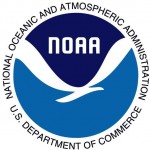eMOLT
Beginning in 2001, more than one hundred commercial fishing vessel captains have helped deploy oceanographic sensors on the Northeast Continental Shelf as part of the Environmental Monitors on Lobster Traps and Large Trawlers (eMOLT) program. While there have been a variety of instruments deployed, bottom temperature sensors and satellite-tracked drifters have provided the most data and continue to be deployed today. As of this writing, over 50 commercial vessels have collectively transmitted over 13,000 haul-averaged bottom temperatures in real time which are now being fed to ocean forecast models. For our fisheries to be sustained in a rapidly changing environment, it is important that the stakeholders be involved and partner with government-funded science to monitor our shelf water variability on multiple time and space scales.
Project URL: http://www.emolt.org/
Geographic Scope: Data collected from thousands of locations on the Northeast Continental Shelf by commercial fishing vessels emanating from dozens of ports ranging from New Jersey to Nova Scotia
Project Status: Active - recruiting volunteers
Participation Tasks: Learning, Measurement, Observation,
Start Date: 04/01/2001
Project Contact: james.manning@noaa.gov
Federal Government Sponsor:

Other Federal Government Sponsor:
Fields of Science: Climate and weather, Computers and technology, Ecology and environment, Education, Ocean/water and marine
Intended Outcomes: With help from the commercial fishing industry, the Gulf of Maine Lobster Foundation in particular, we hope to collect basic physical oceanographic data that can a) improve both ocean circulation models and stock assessments and b) contribute to our local ocean observing system for decades to come.

